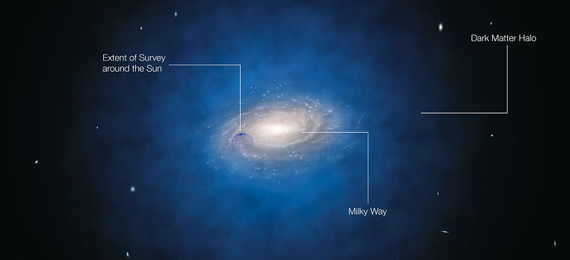
Did you know? 95% of the galaxy is formed of dark matter. It is a type of matter that does not interact with other galaxies’ matter and energy in any form/method except through gravity. The luminescent matter forms about 9×1010 solar masses.
What is dark matter? It is formed of particles that do not transmit, absorb or reflect light so it is difficult to detect them by observing electromagnetic radiation. To put it in other words, it is a material that cannot be seen through eyes and experts believe that dark matter is the motion of stars within the universe.
What’s Dark Matter Halo?
Dark matter halos are known as invisible materials that surround the galaxy or a group of galaxies. Though is not visible directly their presence is detected based on the movement of gases and stars in the universe.
What Percentage of Dark Matter Makes up the Universe?
- A. 27%
- B. 30%
- C. 40%
- D. 32%
As per the modern models of physical cosmology, a dark matter halo is known as a basic unit of cosmological structure.
Percentage of Dark Matter in the Universe
Approximately 68 percent of the universe is dark energy. But the percentage of dark matter in the universe is 27 percent.
Studies on Dark Matter Halos
The visible disk of the Milky Way Galaxy is considered to be larger but it is actually a spherical halo of dark matter. It is also believed that the creation of dark matter halos played a major in the early formation of galaxies.
Scientists tried to discover the mysterious signal that arrives far from galaxies but they couldn’t find dark matters. They even used some inventive new technique to detect this strange signal and this technique uses our galaxy to capture dark matter.
For many decades scientists have been looking for dark matter that seemed an invisible material to be captured. According to a 2014 study, a signal arriving closely from the galaxy was detected and this gave hope to scientists and became long-sought proof for dark matter.
Some modern models predict that dark matter particles gradually turn into ordinary matter and a method that would provide faint photon emissions that could be detected by telescopes. In 2014, scientists also detected X-ray emission from a galaxy when they were looking for dark matter. It is believed that dark matter collects around the universe.